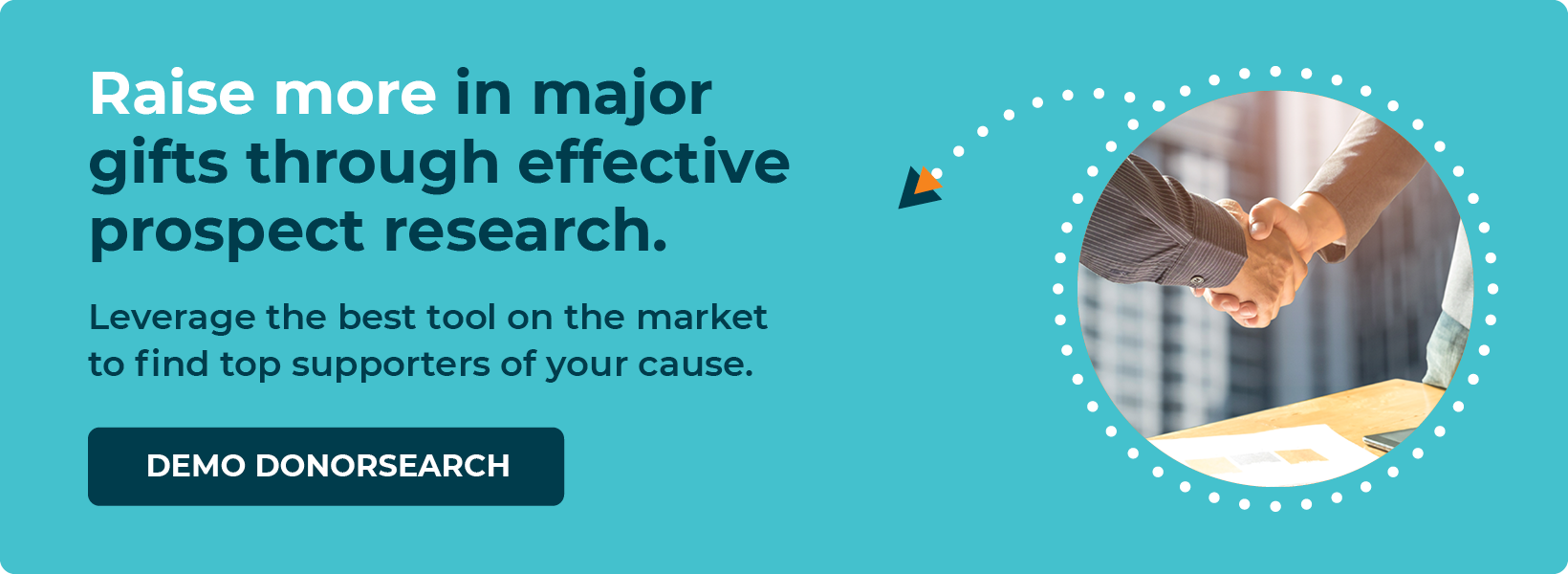
16+ Prospect Research Tools To Find More Donors For Your Org
The basic premise of prospect research is simple enough for even the newest nonprofit professionals to grasp—it is the process of identifying new major donors for your mission. In this process, you gather information about individual prospects that helps your organization build lasting relationships with them (on top of securing donations).
But you likely still have lingering questions about prospect research, especially if you’ve never prospected before.
For example, how do you gather information about your prospects before you begin cultivating them? In other words, how does the process of prospecting actually work? Here’s the secret: It all comes down to having the right prospect research tools on your side.
The good news is that there are hundreds of prospect research tools out there that can help you examine your supporters’ affinity for your cause and capacity for giving. However, it can be challenging to know which tools are right for your organization and will help you and your team find the best, most actionable information that will make a difference in your cultivation strategies.
That’s where this guide comes in. In it, we’ll take a closer look at the world of prospect research tools, covering:
- Prospect Research Tools: An Overview
- 16+ Best Prospect Research Tools For Your Organization to Consider
- Getting the Most Out of Your Tools
Even if your organization will be relying on a prospect research consultant to handle the bulk of your prospecting work, it will still be helpful for you to know a thing or two about the tools that make prospecting possible. Let’s begin!


Prospect Research Tools: An Overview
Before exploring the specifics of the top prospect research tools on the market, you should familiarize yourself with the basics of prospect research and the role that the right tools can play in the process.
What is prospect research?
Prospect research is the process of discovering major donors both within your organization’s current donor pool and beyond it. As you conduct this research, you’ll look for both the affinity (warmth) and capacity (wealth) markers that signal someone is passionate about your cause and has the financial means to give a large gift for a capital campaign, your annual fund, or even your legacy giving program.
Here are some examples of both affinity and capacity markers to give you an idea of what prospect researchers look for:
- Affinity (Warmth) Markers
- Donations to your nonprofit or other nonprofits
- History of involvement with your nonprofit or other philanthropic organizations (such as volunteering or board service)
- Personal information such as hobbies and interests
- Capacity (Wealth) Markers
- Real estate ownership
- Business affiliations
- SEC transactions
- Political giving history
Prospect research is often confused with wealth screening, which is the process of focusing only on a donor or prospect’s wealth markers. Wealth screening is one part of a comprehensive prospect research process, but certainly not a replacement for it. The benefit of examining both wealth and warmth markers is that you can not only be sure that a donor is capable of giving a large gift to your organization, but also that they’re likely interested in your specific cause.
What is a prospect research tool?
A prospect research tool is any resource that helps you learn more about your organization’s donors and prospects. These tools can range from search engines and social media sites to dedicated prospect research databases.
The tools your organization should use will depend on your needs and budget, as well as what you already know about your donors and prospects. We’ll walk through some of our favorite tools below.
What should you look for as you start choosing your prospect research tools?
As you begin shopping around for the best prospect research tools for your nonprofit, you should consider whether each tool is:
- Precise: Make sure your chosen tool sets you up to learn the right things about your donors. Look for a solution that you can trust to give you information that is correct, up-to-date, and actionable.
- Scalable: Some nonprofits fail to think ahead to what their organization will need as it grows. Consider this as you shop for your tools, determining what will work for your organization now and what will scale with you as you grow in the future.
- User-Friendly: Your tools should be easy for everyone on your team to use. As you narrow down your options, make sure to request demos from each provider so that you can judge how easy it will be to get your whole team using the tool.
- Offering a new approach: Some prospect research tools now offer machine learning features, which can help you more thoroughly vet your organization’s prospects.
Approaching the shopping process with care will mean that you can quickly identify the tools that your organization needs and dive into the prospecting process sooner!

16+ Best Prospect Research Tools For Your Organization to Consider
As mentioned above, there are hundreds of tools available for your nonprofit to use for prospecting purposes. However, there are only a few that will help you get the actionable information you need to start building strong relationships with your prospects. Here are 16+ tools we recommend for your consideration:
- DonorSearch
- Prospect Visual
- Instrumentl
- Donorly
- Double the Donation
- Zillow
- FEC Records
- SEC Records
- Million Dollar List
- Freewill
- AlumniFinder
- Fundraising Report Card
- Chronicle of Philanthropy
- Social Media Platforms
- TouchPoints
Remember, as you study up on each of these different tools, be sure to consider their affordability, scalability, and user-friendliness. Let’s get started with our favorite prospect research tool.
1. DonorSearch
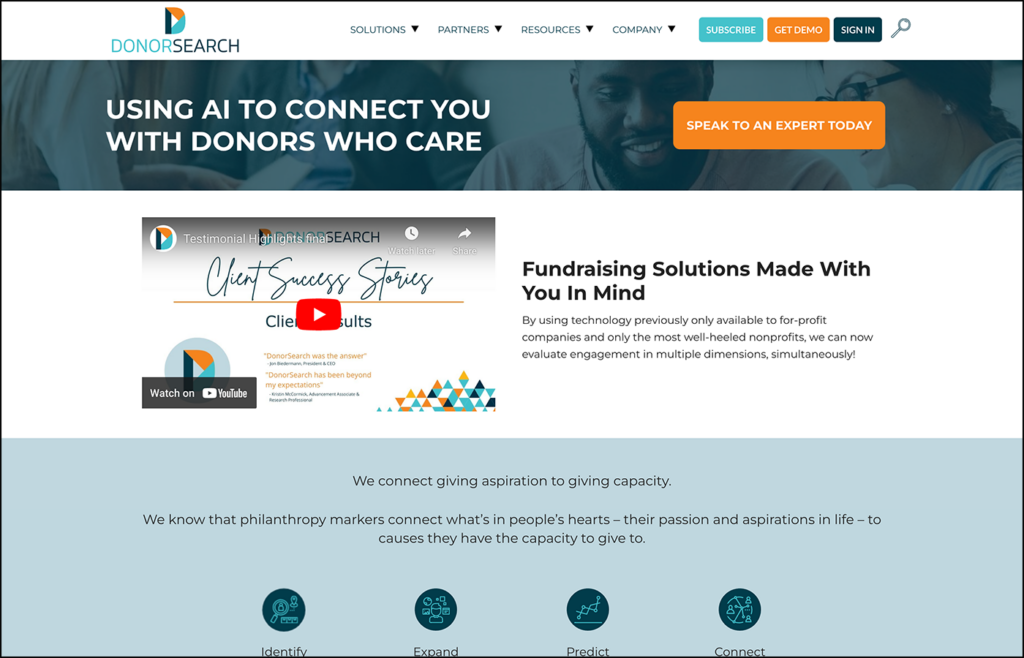
DonorSearch offers multiple solutions that can help your nonprofit improve its approach to prospect research and give you a fuller picture of your prospect and donors’ financial capacity and passion for your cause, including a cutting-edge AI solution for nonprofits. When you use DonorSearch to connect the dots between what is in a prospect’s heart and their capacity to give, you can lay a strong foundation for lasting relationships that will go beyond just a one-time donation.
What Makes This Prospect Research Tool Stand Out
Here are some of DonorSearch’s incredible features that make it our favorite tool for prospect research:
- ProspectView Online: ProspectView Online empowers your organization to tap into dozens of databases that give you information about prospects’ past philanthropic giving, real estate information, stock holdings, business affiliations, and wealth details. The tool also allows you to gain access to highly-targeted lists of viable prospects, filter your results, create comprehensive donor profiles, and create customizable visual reports you can share with your organization’s leaders.
- DonorSearch Ai: As the most advanced machine learning tool created for the nonprofit sector, DonorSearch Ai can make specific recommendations on which of your prospects are most likely to donate within a rolling 12-month period.
- Wealth Screening: DonorSearch offers a wealth screening tool that also allows you to examine prospects’ philanthropic markers. Plus, this tool has an accuracy rate of 90-100%, the highest in the industry.
- Data Appends Service: The DonorSearch team can append your donor data, ensuring that everything is up-to-date. All you need to do is submit your current data so they can supplement it with critical demographic information.
- Integrations: DonorSearch integrates with over 40 CRMs and fundraising tools, so when you choose DonorSearch, you can be sure that your tech stack is cohesive.

Pricing
Contact DonorSearch for a demo and a quote.
2. Prospect Visual
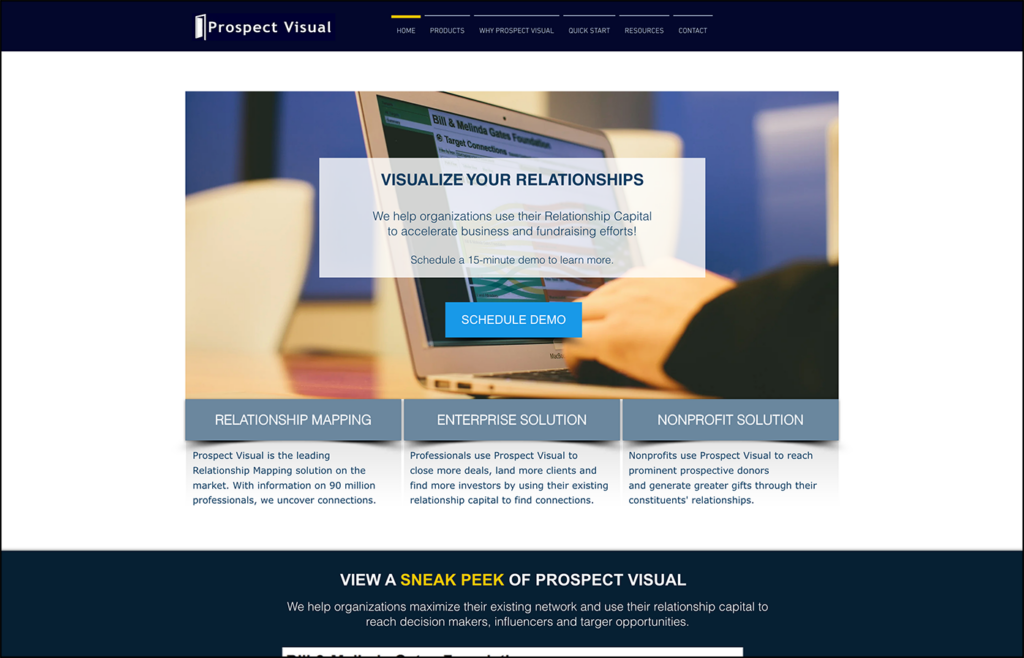
Prospect Visual offers visual relationship-mapping technology that can aid your prospecting and fundraising efforts by illustrating the relationships between your current donors and your prospects. It’s a great solution if your team responds well to visual reporting. Plus, by connecting prospects to current donors, you’ll have an advantage when it comes time to reach out to a prospect—you’ll know someone who can likely make an introduction and help you start the relationship off on the right foot!
Prospect Visual also offers data appending and can help you flesh out your prospect profiles with employment details, educational history, board and nonprofit affiliations, and more.
Pricing
Reach out to the Prospect Visual team to schedule a demo and get more information on pricing.
3. Instrumentl
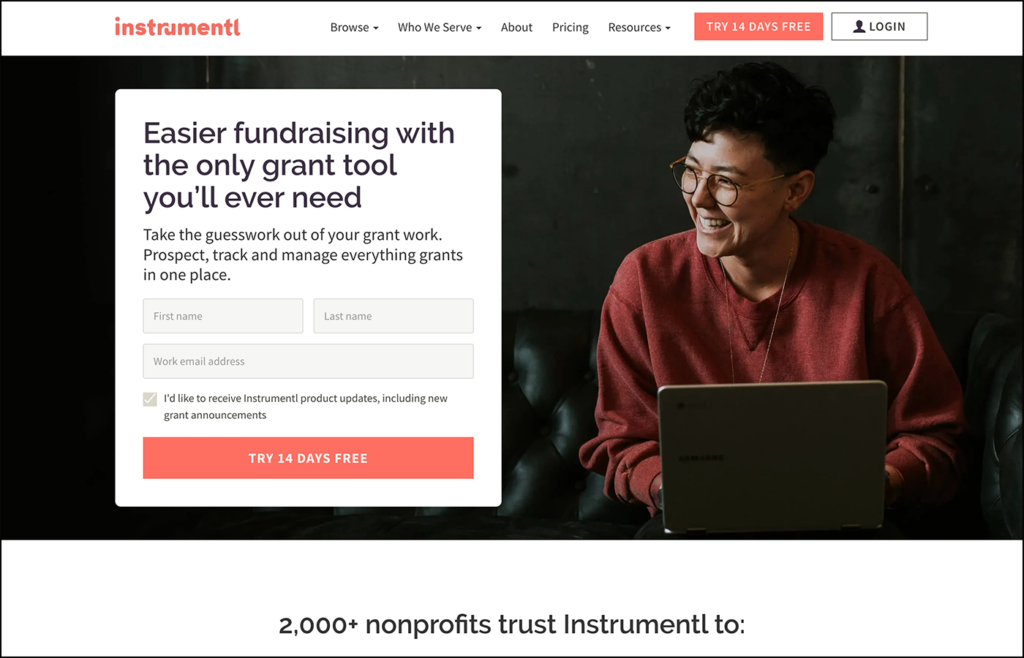
With information on 200,000 funders and over 12,500 active grant opportunities, Instrumentl is a comprehensive source of grant and funder data. So, while it may not be a tool geared toward helping you find individual prospects, it can help your nonprofit identify grant opportunities and make the most of the application process.
Here are some of the features that make Instrumentl a powerful tool:
- Foundation profiles that help you learn about new grantees, geographical giving, grant sizes, and more
- Recipient profiles that show you who has funded similar nonprofits in the past
- Smart matching algorithm that provides you with recommended active grant opportunities and funders to pursue
- Organized workflow to help your team create tasks and update statuses so that you’re always on track to submit your grant applications on time
- Weekly reminders about upcoming deadlines
- Multi-year tracking that helps you plan ahead for renewals with your current funders
With all these great features, Instrumentl can help your nonprofit get results from your grant work. In fact, the platform reports that, on average, users raise $200,000 in new grants in their first twelve months of using Instrumentl.
Pricing
Instrumentl offers a 14-day free trial. After that, your nonprofit can choose from a basic plan ($179/month), a standard plan ($299/month), a professional plan ($499/month), or a custom-designed plan.
4. Donorly
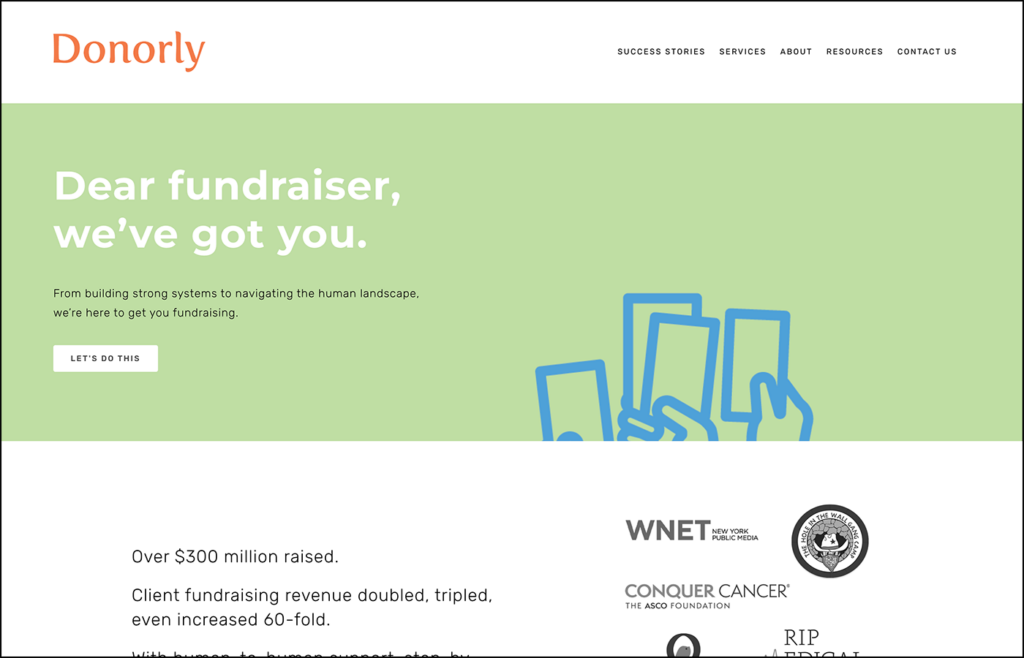
Donorly isn’t a traditional prospect research tool. Instead, it’s a nonprofit consulting firm led by fundraising and capacity-building experts who can assist your nonprofit in growing its donor pool through prospect research. You can work with Donorly to purchase a five-, 10-, or 20-hour prospect research subscription. The Donorly team will use this time to tap into their arsenal of prospect research tools and help you learn more about your current and future donors.
Additionally, Donorly provides other services that your nonprofit may need while prospecting, such as transitional staffing services, telefundraising training, capital campaign counsel, and fundraising feasibility studies.
Pricing
Contact Donorly to learn more about their pricing.
5. Double the Donation
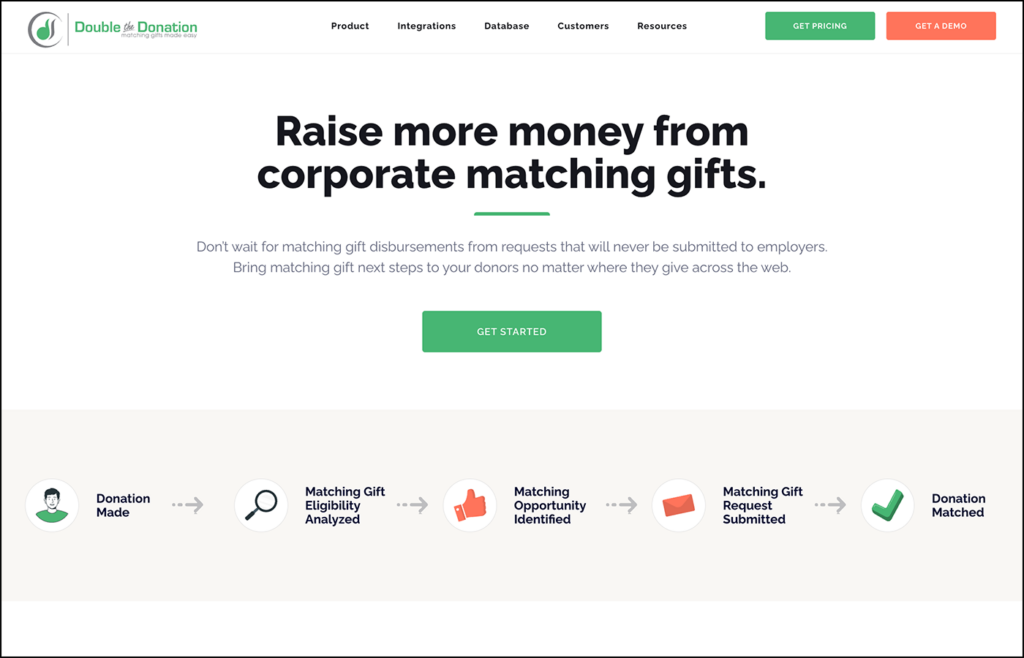
Did you know that many of your donors and prospects may be eligible to have their employers financially match their charitable contributions? This is a type of corporate philanthropy known as matching gifts, and Double the Donation can help you tap into it.
Double the Donation offers a user-friendly matching gift tool that you can add to your donation forms and website that will help you and your donors discover whether or not they’re eligible for gift matching. Plus, Double the Donation now offers matching gift automation, allowing your donors to submit their work email addresses and have their gift-matching information submitted to their employers without lifting a finger. This means donors can get their contributions doubled faster!
Pricing
Double the Donation offers different pricing plans based on your organization’s size and matching gift revenue. Their small nonprofit plan costs $999/year, while their mid-sized plan costs $1,500/year. Custom pricing is also available for large organizations.
6. Zillow
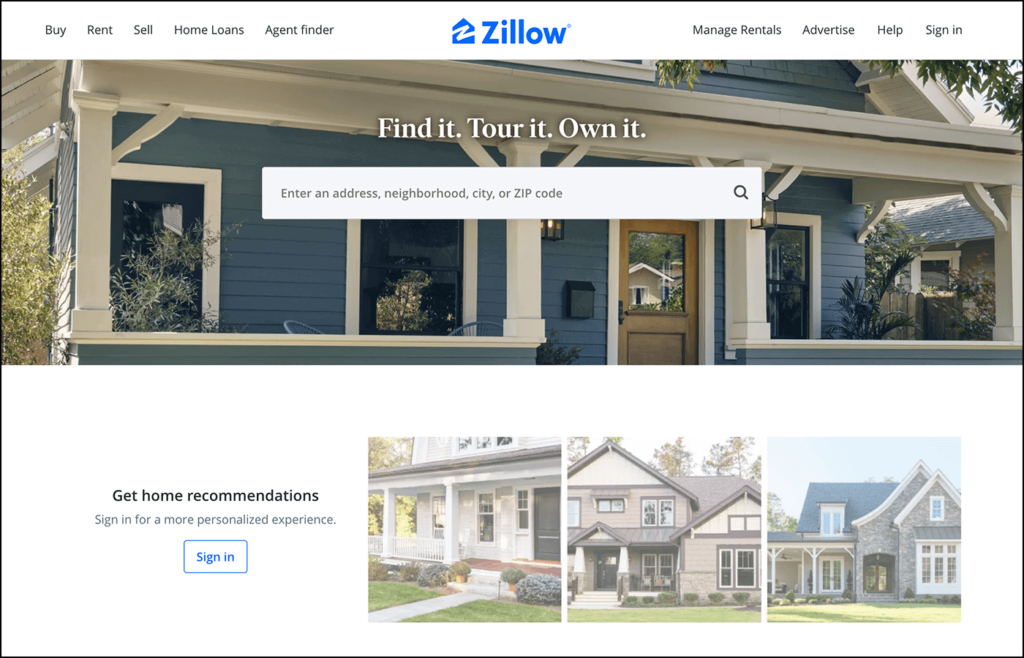
Zillow is a popular real estate website. On the site, you simply type in an address, neighborhood, city, or ZIP code to browse real estate listings and their estimated values.
Since real estate ownership is a capacity marker that you can use to determine whether or not an individual is able to make a large gift, you can use Zillow to look up a prospect’s current or past properties to get a fuller picture of their capacity. This information can also help you make an informed first donation ask when the time is right.
Pricing
Zillow is completely free to use! Simply create a profile and begin searching.
7. LinkedIn
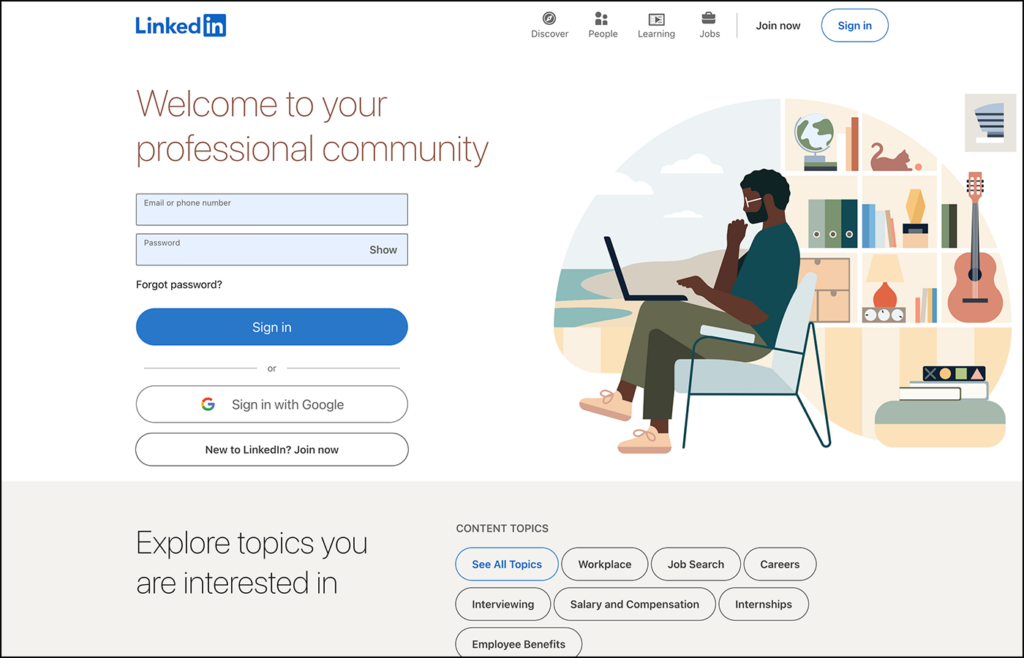
If you’re looking to add information to your donor prospect profiles, LinkedIn is the place to go. It’s a professional networking site and can be a great source for information like:
- Education history
- Current or previous employers
- Common professional connections
Plus, if your prospects or donors are active on LinkedIn and post regularly, you may see updates on their professional lives come through your feed. This gives your organization another touchpoint with your prospects and donors—you can like the updates or even comment your thoughts. Plus, you’ll have something current to talk about the next time you catch up with the prospect.
Pricing
LinkedIn is free to use, but you can pay for a premium version to unlock additional features.
8. Federal Election Commission (FEC) Filings
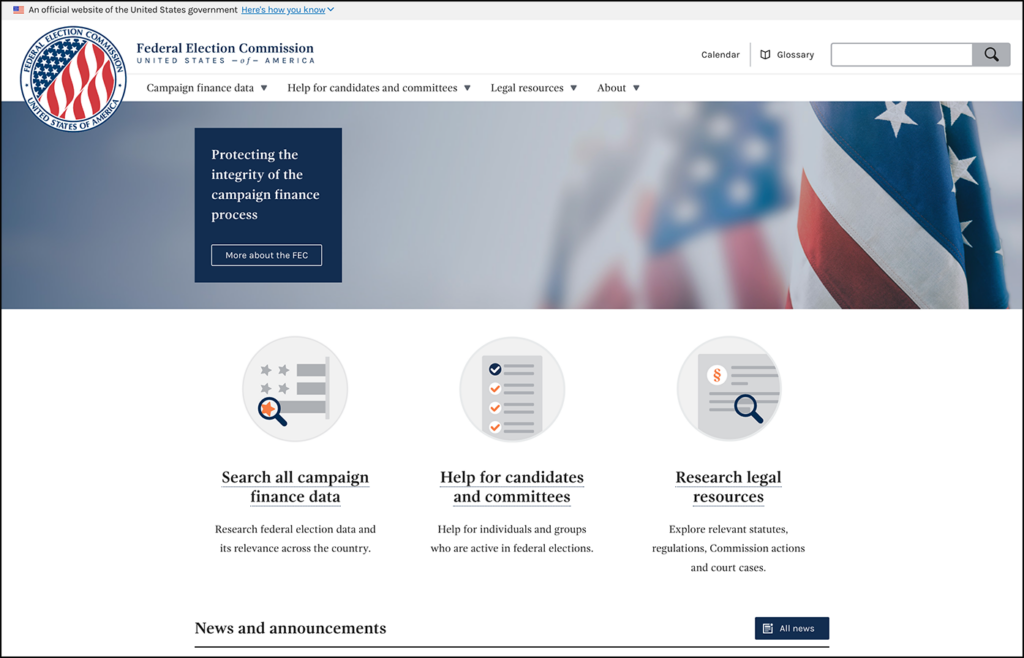
The FEC’s records can give your nonprofit information about your prospects’ political giving habits. All you need to do is type in a prospect’s name and any other information like the individual’s ZIP code, city, or employer. You’ll then be able to see what candidate or party they donated to, how much they gave, and when.
These records can give you information about a prospect’s giving capacity, and, depending on your mission, they may also indicate an affinity for your cause. For example, you may discover that a certain prospect donated to a political candidate with values that are similar to your nonprofit’s mission.
Pricing
The FEC’s filings are completely free for anyone to browse.
9. Security and Exchange Commission (SEC) Filings

Similar to the FEC, the SEC also provides publicly-available information, namely quarterly and annual reports and stockholder information. Similar to the FEC site, you simply type in an individual’s name or a particular company’s ticker symbol. Since stock holdings can signal a prospect’s capacity, this will be valuable information for your organization to review.
Pricing
SEC filings are also completely free to use.
10. Million Dollar List
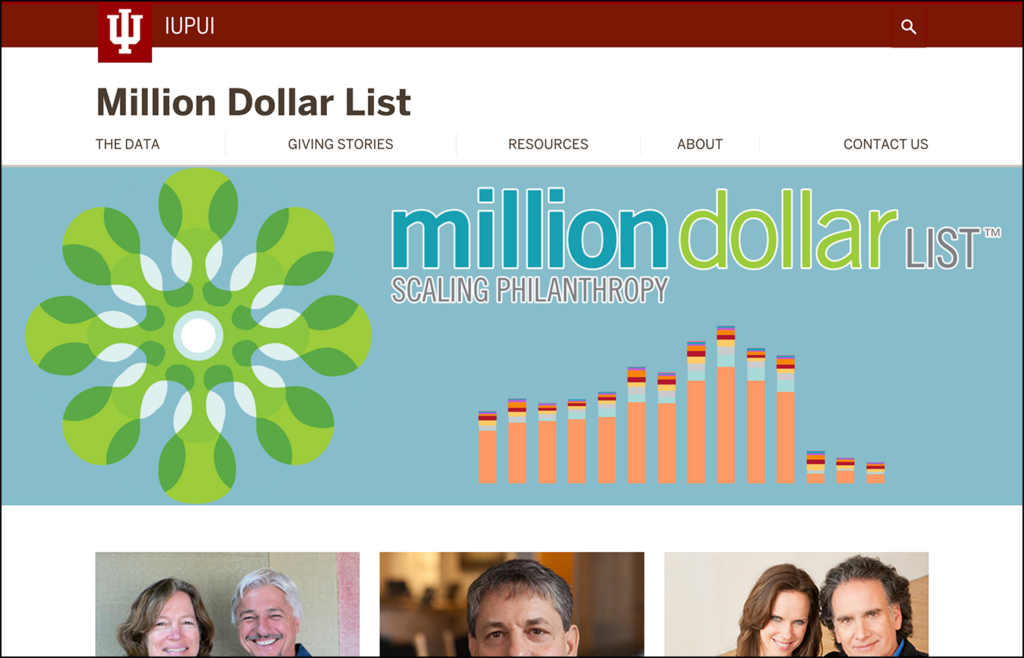
The Million Dollar List is a prospect research resource compiled by the Indiana University Lilly Family School of Philanthropy. It collects information on publicly-announced charitable contributions of $1 million or more. You can search the Million Dollar List by:
- Specific donors
- Recipient organizations
- Geographic location
- Charitable subsector
- Donation size
Information about such large gifts can not only give you an idea of a prospect or donor’s wealth, but also their affinity for nonprofit causes like yours!
Pricing
The Million Dollar List is free for anyone to use.
11. Freewill
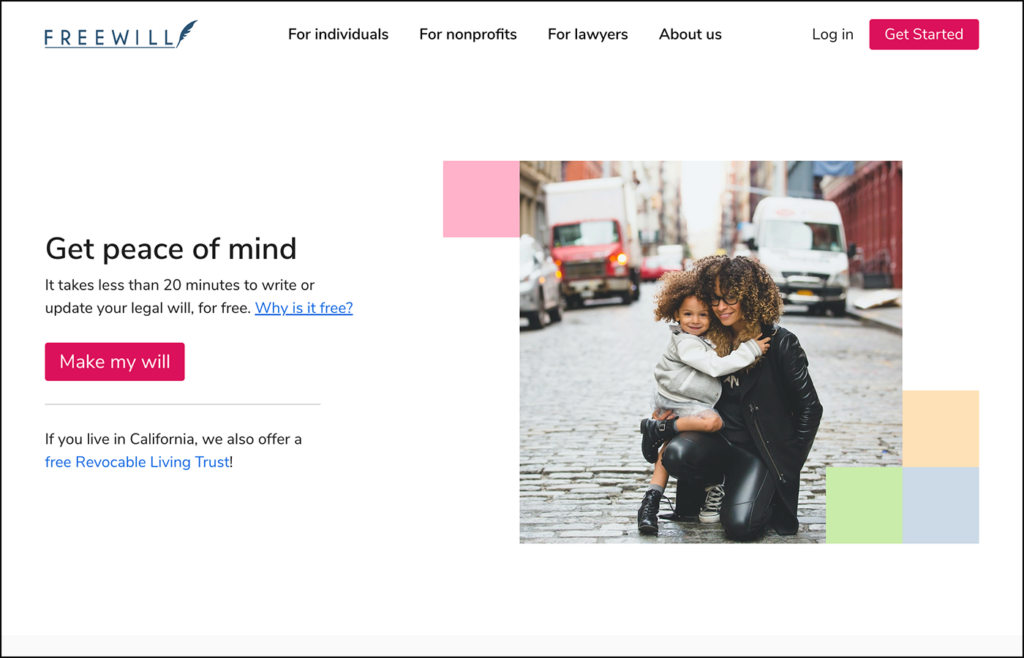
Most of the time when nonprofits talk about major donations, they’re likely thinking of cash gifts. But non-cash gifts can be extremely valuable, especially for growing nonprofits. Non-cash gifts might include:
- Bequests
- Stocks, bonds, and ETFs
- Qualified charitable distributions from IRAs
- Crypto donations
Freewill can help your nonprofit discover these gifts and offers a variety of organizational-facing and donor-facing tools to make this possible. For example, they can help you offer donors the option to make a non-cash donation and then assist in liquidating gifts of stock and cryptocurrency.
According to Freewill, when nonprofits focus on non-cash gifts, they can grow six times faster than they would with just cash alone. Give their platform a try to discover unique forms of gifts or to grow your planned giving program!
Pricing
Contact Freewill for pricing information.
12. AlumniFinder
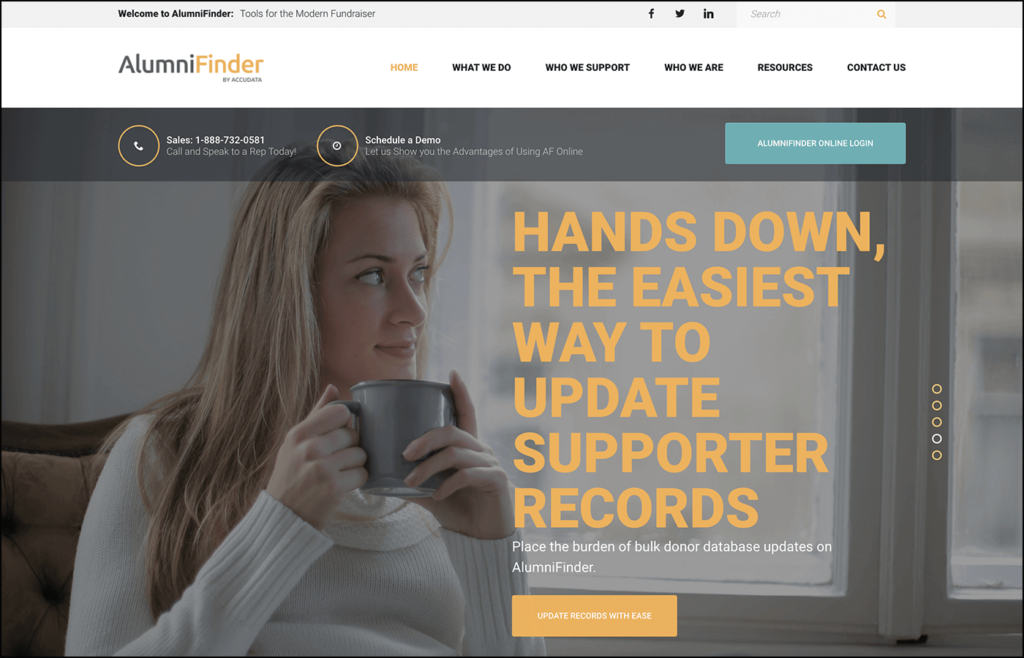
AlumniFinder believes in the power of data to drive fundraising results. It is a great option for educational institutions, healthcare organizations, and other nonprofits. AlumniFinder’s tools can help your organization update its donor database, discover more about your donors and prospects, and use analytics to segment your donors for more successful cultivation moves.
Additionally, AlumiFinder can help manage your digital campaigns through fine-tuned email strategies and online targeting.
Pricing
Reach out to the AlumniFinder team to learn more about pricing.
13. Fundraising Report Card
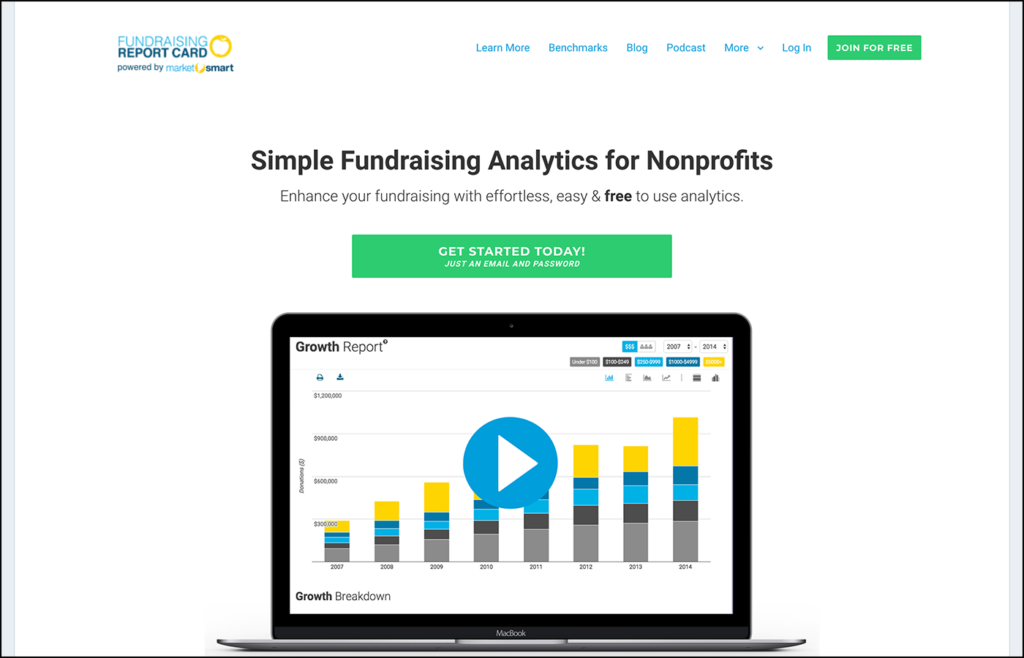
Fundraising Report Card is a prospect research tool that provides performance analytics and reporting for nonprofits. Powered by your organization’s data, Fundraising Report Card can help you measure and analyze key metrics like donation growth, donor churn, and retention rate. It can also help your team focus its attention on recovering lost donors and prospects by empowering you to create customized report segments that allow you to visualize which prospects and donors to reach out to.
Plus, with this tool, you can present your data to your stakeholders in a digestible, visual format.
If you’re looking to make more sense of your donor data, Fundraising Report Card can help!
Pricing
Fundraising Report Card offers both free and paid plans based on your organization’s needs. Contact them for more information!
14. Chronicle of Philanthropy
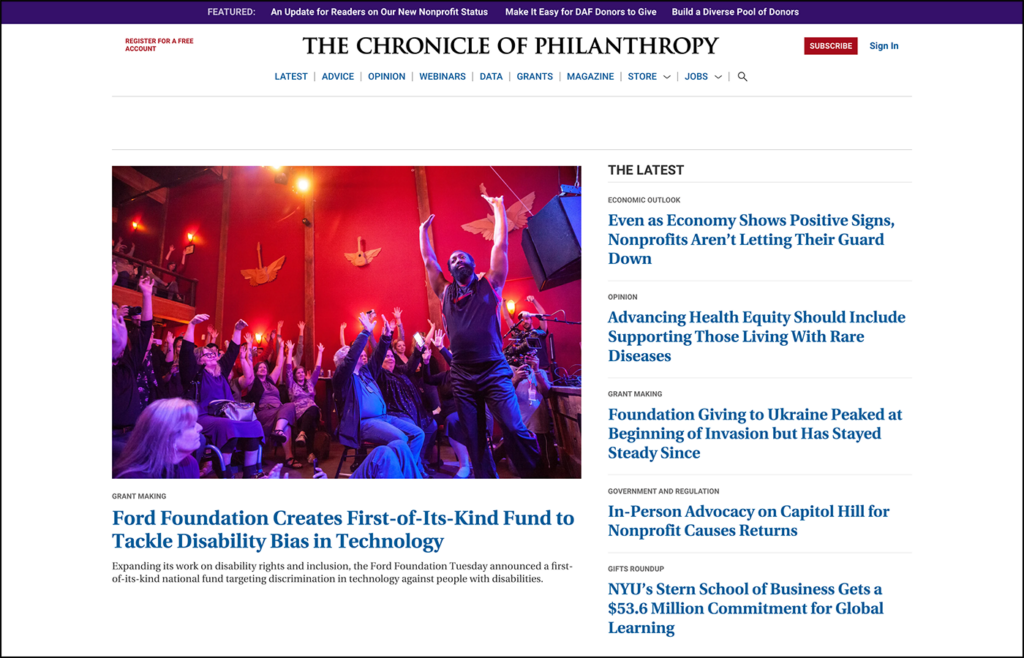
The Chronicle of Philanthropy is a valuable nonprofit resource and prospect research tool. Not only does the Chronicle provide news updates about the nonprofit sector, but it also offers a variety of useful reports and datasets you can use while prospecting.
For example, the Chronicle recently published the newest edition of “The Philanthropy 50,” a list of America’s fifty biggest donors. You can browse through these lists by name, donation amount, source of wealth, location, and cause. Plus, you can look at past Philanthropy 50 lists dating back to 2000.
The Chronicle also offers a free database of charitable gifts of $1 million or more, similar to the Million Dollar List. You can sort this database by cause and donation size.
Pricing
Much of the Chronicle’s content is free to access, but some of it is protected by a paywall. To get a custom quote for a subscription for your organization, contact the Chronicle. You can also subscribe as an individual for $109.95/year.
15. Social Media Platforms
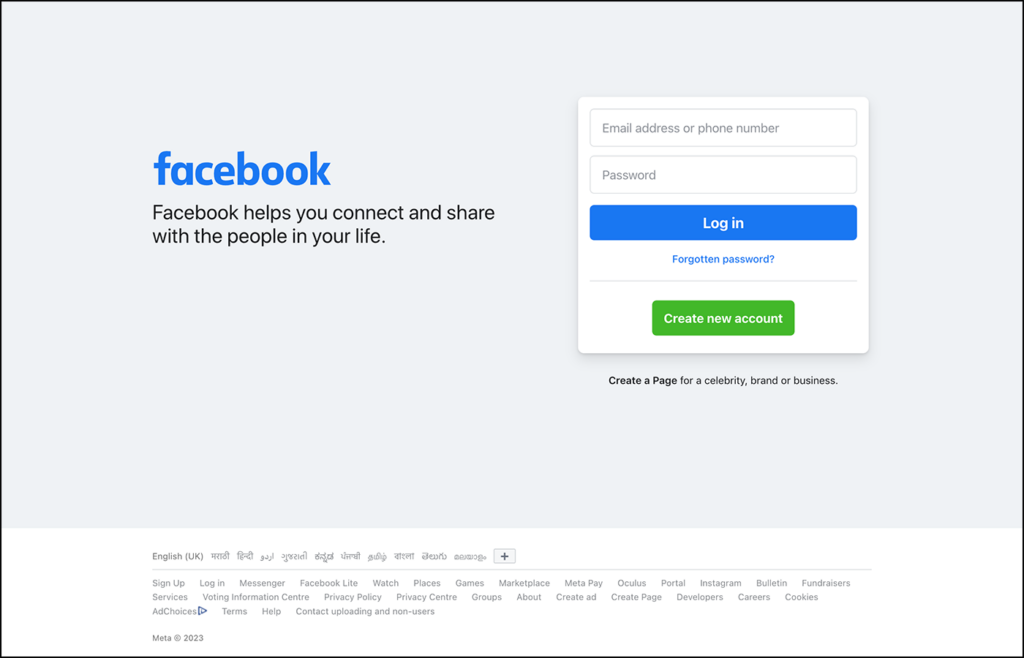
Believe it or not, social media platforms like Facebook can be beneficial for prospect research. Here are a few examples of how your organization might use social media platforms to learn more about its donors and prospects:
- Your executive director might have a friend in common with a prospective donor, and could reach out and ask the mutual friend to make an introduction.
- Your social media manager might notice that a prospect often interacts with the posts on your organization’s page, and could initiate outreach on social media.
- One of your board members might know a prospect well and see their life updates on social media, helping your organization learn more about that prospect’s values, interests, and hobbies.
Whether you opt to use Facebook, Instagram, Twitter, or another platform to get to know your donors and prospects, these tools can be valuable in helping you learn more personal information about them that can supplement what you already know about their educational history or professional life.
Pricing
Facebook, Instagram, and Twitter are free for all users.
16. TouchPoints
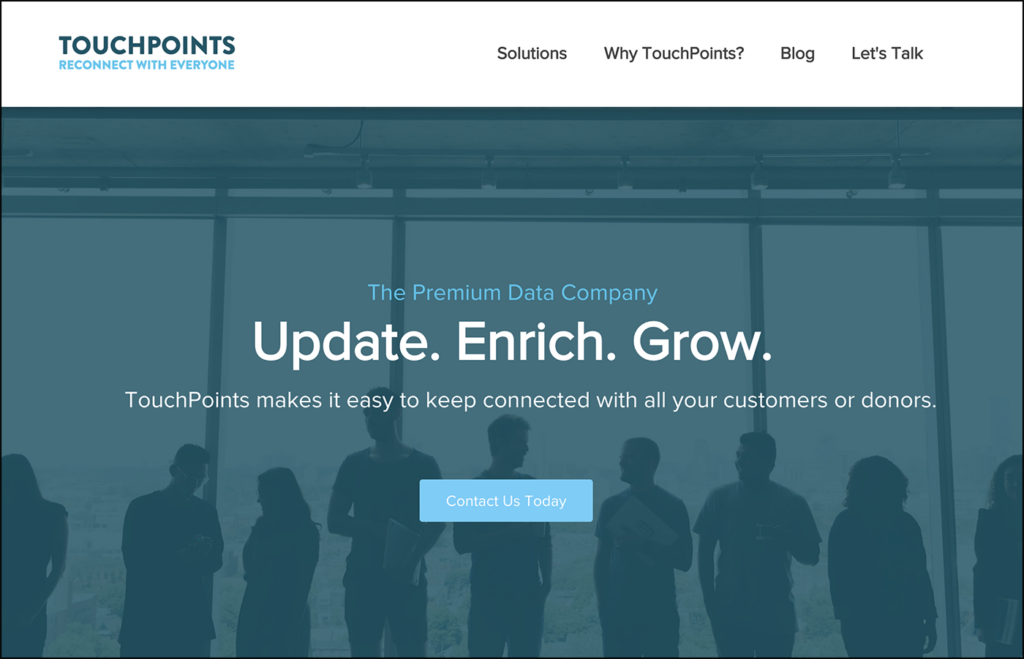
TouchPoints is another prospect research tool that can help you keep your nonprofit’s database clean and useful. They focus on key data elements like full name, postal address, phone number, age, deceased screening, education, demographics, and social media.
TouchPoints can monitor your data and proactively inform you when anything has changed. But that’s not all—they’ll help you append your data with the most accurate information available, too.
Pricing
Get in touch with the TouchPoints team to get pricing information.

Getting the Most Out of Your Tools
Now that you’ve explored our list of the best prospect research tools on the market, you’ve likely got an idea of the solutions your team needs to optimize the prospecting process. Once you get up and running with a tool, use these tips to get the most value out of it:
- Train your team to use the tools. For your new prospect research tools to be truly useful, you need to make sure that the people on your team that will be using them most often know how to use them and can integrate the tools into their regular workflow. If possible, work with the provider to set up a demo of the tool or a training session. And don’t forget to leverage ongoing customer service to make sure your team gets all their questions answered.
- Keep your data tidy. A lot of your prospecting work will rely on the data that your organization already has in its CRM. Keep your data clean so that it will provide useful insights during the research process. You may want to set up a regular data check-up routine where you check for outdated or inaccurate entries. You should also consider having your data appended if you find holes in your donor profiles.
- Create thorough prospect profiles. A prospect profile is an all-in-one resource that stores all the details about an individual prospect, from their birthday to the summary of your latest interaction with them. Each time you find a viable prospect, begin creating a profile for them. This profile should serve as a living document. Return to your profiles each time you interact with a prospect so that you keep all the information up-to-date.
- Use your prospect research tools with your larger purpose in mind. As you conduct prospect research, it can be easy to get caught up in numbers and charitable giving fun facts about individual donors. While building relationships with your donors is essential, remember the “why” behind your prospecting efforts. Strive to connect your prospecting work to your larger mission, and remind yourself often about your end goal for prospecting in the first place—to better serve your beneficiaries!
Many prospect research tools will require an investment of your nonprofit’s money and time to become part of your usual research regimen. As you work to blend your new tools into your current processes, don’t hesitate to reach out for help. Leverage your providers’ customer service offerings, and consider working with a nonprofit consultant to further refine your approach.

Final Thoughts
The better your prospect research tools, the better your prospect research efforts will be. Make sure you’re considering the right solutions by reviewing our list of top providers, and make sure to do your homework on the tools that make it to the top of your own list. As you leverage the right tools, you’ll be more equipped to find the donors and prospects who want to give large gifts to organizations like yours and are able to. Good luck!
Want to keep reading? Check out these resources:
- Fundraising Software: 25+ Best Solutions to Drive Donations. Are you also looking for tools that can make your fundraising results soar? Check out our favorite solutions!
- Capital Campaigns: The Basics Your Nonprofit Should Know. Capital campaigns are complex undertakings. Get the rundown of the basics in this full guide.
- AI For Nonprofits: Everything Your Org Needs to Know. Learn how AI is powering the future of nonprofit work and get introduced to DonorSearch Ai, our cutting-edge solution.
- A Complete Guide to Planned Gifts for Nonprofits. Use this guide to learn more about planned giving so that you can leverage your prospect research tools to expand your planned giving program.
